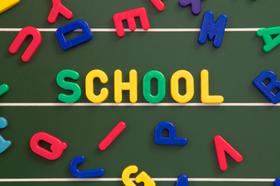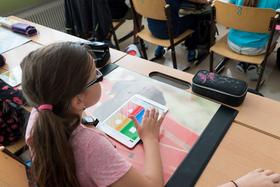Top Rankings
Randolph School District ranks among the top 20% of public school district in Massachusetts for:
Category
Attribute
Diversity
Most diverse schools (Top 1%)
For the 2025 school year, there are 4 public elementary schools serving 1,760 students in Randolph School District. This district's average elementary testing ranking is 3/10, which is in the bottom 50% of public elementary schools in Massachusetts.
Public Elementary Schools in Randolph School District have an average math proficiency score of 31% (versus the Massachusetts public elementary school average of 41%), and reading proficiency score of 32% (versus the 42% statewide average).
Minority enrollment is 89% of the student body (majority Black), which is more than the Massachusetts public elementary school average of 49% (majority Hispanic).
Overview
This School District
This State (MA)
# Schools
5 Schools
1,360 Schools
# Students
2,424 Students
605,604 Students
# Teachers
218 Teachers
51,596 Teachers
Student : Teacher Ratio
11:1
11:1
Student By Grade
District Rank
Randolph School District, which is ranked within the bottom 50% of all 393 school districts in Massachusetts (based off of combined math and reading proficiency testing data) for the 2022-2023 school year.
The school district's graduation rate of 77% has stayed relatively flat over five school years.
Overall District Rank
#304 out of 395 school districts
(Bottom 50%)
(Bottom 50%)
Math Test Scores (% Proficient)
32%
42%
Reading/Language Arts Test Scores (% Proficient)
32%
44%
Science Test Scores (% Proficient)
29%
44%
Graduation Rate
77%
90%
Students by Ethnicity:
Diversity Score
0.67
0.66
% American Indian
n/a
n/a
% Asian
17%
8%
% Hispanic
16%
26%
% Black
52%
10%
% White
11%
51%
% Hawaiian
n/a
n/a
% Two or more races
4%
5%
All Ethnic Groups
District Revenue and Spending
The revenue/student of $26,978 is higher than the state median of $23,845. The school district revenue/student has grown by 9% over four school years.
The school district's spending/student of $29,448 is higher than the state median of $24,602. The school district spending/student has grown by 9% over four school years.
Total Revenue
$65 MM
$21,850 MM
Spending
$71 MM
$22,544 MM
Revenue / Student
$26,978
$23,845
Spending / Student
$29,448
$24,602
Best Randolph School District Public Elementary Schools (2025)
School
(Math and Reading Proficiency)
(Math and Reading Proficiency)
Location
Grades
Students
Rank: #11.
Margaret L Donovan
(Math: 38% | Reading: 30-34%)
Rank:
Rank:
4/
Bottom 50%10
123 Reed Street
Randolph, MA 02368
(781) 961-6248
Randolph, MA 02368
(781) 961-6248
Grades: K-5
| 408 students
Rank: #22.
Randolph Community Middle School
(Math: 31% | Reading: 35%)
Rank:
Rank:
3/
Bottom 50%10
225 High Street
Randolph, MA 02368
(781) 961-6243
Randolph, MA 02368
(781) 961-6243
Grades: 6-8
| 602 students
Rank: #33.
J F Kennedy Elementary School
(Math: 25-29% | Reading: 25-29%)
Rank:
Rank:
3/
Bottom 50%10
20 Hurley Dr
Randolph, MA 02368
(781) 961-6211
Randolph, MA 02368
(781) 961-6211
Grades: PK-5
| 475 students
Rank: #44.
Martin E Young Elementary School
(Math: 20-24% | Reading: 20-24%)
Rank:
Rank:
2/
Bottom 50%10
30 Lou Courtney Dr
Randolph, MA 02368
(781) 961-6256
Randolph, MA 02368
(781) 961-6256
Grades: K-5
| 275 students
Recent Articles

The 15 Biggest Failures of the American Public Education System
The world is in a constant state of change and those who fail to adjust fall behind. Unfortunately, the American public education system has not kept up with the times and is currently facing a number of serious problems. Keep reading to learn about the biggest failures affecting the modern U.S. public education system as well as some of the trends that could spark change.

Florida Governor Calls for More Funding for State鈥檚 Public School System
Florida Governor Rick Scott has introduced a state budget for next year that pumps one billion more dollars into the public school system. We鈥檒l look at his reasons for the increase and the responses to the proposal.

Can Your Child鈥檚 School Meet the National Standards?
The article discusses the challenges public schools face in meeting national educational standards. It examines current performance trends, identifies key issues affecting student achievement, and explores potential solutions for improving academic outcomes across U.S. public schools.





